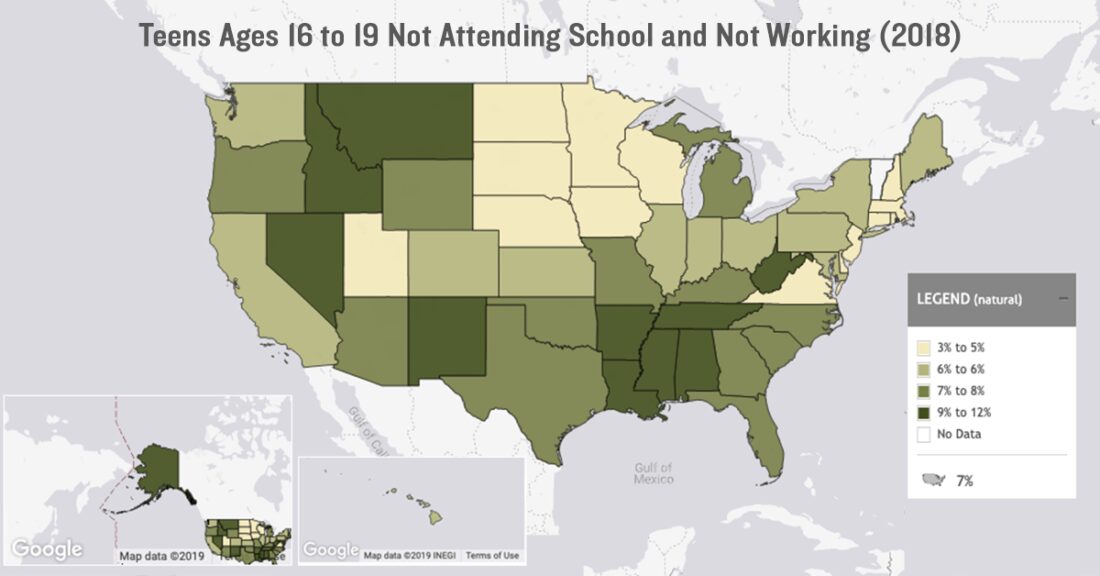U.S. Economy Improves in 2018 Despite More Teens Disconnected From School and Work

There’s no shortage of data indicating that the nation’s economy has continued to recover since the end of the Great Recession. One example: The median income for households with children jumped $2,800 from 2017 to 2018 — the eighth straight year that this figure has risen, according to recently released American Community Survey (ACS) data.
Yet, ACS data on teens who are not in school and not working — i.e. disconnected youth — is less encouraging.
The percentage of 16- to 19-year-olds within this category has held steady at 7% since 2014. However, the number of disconnected youth in America has grown for the first time since 2010 — to 1,186,000 teens in 2018.
The consequences of severing ties to school and work are real and long-lasting. Disconnected youth face a difficult climb to financial stability and job security, and the young parents among them face an even steeper road into adulthood.
Rates of disconnection are highest in the South and West, according to state-level data. Six states — New Mexico (12%), West Virginia (12%), Louisiana (11%), Alaska (10%), Arkansas (10%) and Mississippi (10%) — are most likely to have 16- to 19-year-olds not in school and not working. In Puerto Rico, 13% of all teens fit this statistic.
Comparatively, just 3% of youth in Rhode Island are both unemployed and out of school and one state — Vermont — has too few disconnected teens to reliably calculate a rate.






